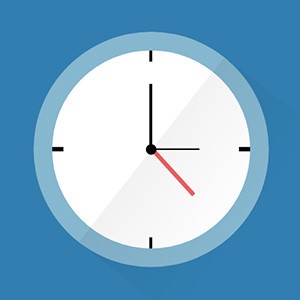When is the best time to tweet?
Your brand is on Twitter and you are posting regular tweets. But is your audience growing and are your followers engaging with you? Ensuring that you follow best practices when posting your content to Twitter will maximise the effectiveness of every tweet, increase your exposure and encourage your followers to interact and engage with your brand.
What is a twitter engagement? Your Twitter engagement rate is a measure of how many of your followers reply or retweet or interact with your content. The following Twitter tips and Twitter best practices are derived from the 2012 study by Buddy Media into the usage of Twitter by online marketers and the effect their methods had on engagement rates. Read below to see how a small change in your tweeting strategy and posting methods can make a huge difference to your effectiveness with Twitter and ultimately increase your return on investment.
What are the best days to Tweet?
Saturday and Sunday were found to be the best days to engage with your audience. The brands surveyed saw a 17% higher engagement rate for tweets made at the weekend compared to those made on weekdays. Most brands however were not making use of these findings as only 19% of them were tweeting during the weekends at all. This trend is even more evident within the fashion and publishing sectors where engagement rates seen where 30% higher at the weekends. Wednesdays saw the lowest engagement rates overall, with rates 7.5% lower than average. So if you need to take a day away from Twitter, make it a Wednesday rather than a Saturday or Sunday.
It is clear that the majority of companies are not taking advantage of this actuality, but it is not always convenient to tweet at the weekend or specific times of the day. Scheduling your tweets, using a service like the Hootsuite app will enable you to coincide with the behaviour of your followers. You can also ensure you are tweeting regularly during office hours where higher interaction rates were recorded. Tweet between 8 am and 7 pm and you should find a more attentive audience. As a side note, this is in start contrast with Facebook posts where engagement rates were higher during “out-of-office” hours.
How often should I tweet?
The stats show that when tweeting, less is more. Brands that tweet less than four times a day see higher engagement rates. Tweeting more than four times in a day sees engagement rates go down. So again this might be a good reason to schedule your tweets so that they appear evenly distributed across the entire 7 day week.
Should I tweet with hashtags?
Including relevant hashtags within your tweets is a great way to enable Twitter users to find your messages even if they are not currently following your brand. There are millions of hashtags circulating at any one time, so ensuring that you use popular, relevant ones is the key to a successful tweet. Within the study it was found that tweeting with hashtags produced twice the engagement rate than those without. But you can also over do it, so try not to use more than two hashtags in any one tweet as this will see a drop in engagement compared to one or two. The study found that only 24% of tweets from the brands were using hashtags, so again this is clearly an underused strategy and a waste of an opportunity to get your brand in front of a new audience.
How do I get more retweets?
And if you want your tweets to be retweeted, ask! Asking for a RT was shown to give you a 12x higher retweet rate. And with only 1% of brands regularly asking their followers to retweet, clearly this is an unused tactic. In fact, almost any call-to-action, such as reply, retweet, follow or even asking a direct question, saw higher levels of interaction. The study even showed that writing “retweet” as opposed to “RT” impacts positively on engagement rates.
How long should my tweets be?
Keep your tweets below 100 characters. This was shown to increase engagement by 17%. So watch the length of your tweets, include a link, (using bit.ly url shortning for longer links) as tweets with links saw an 86% higher retweet rate. The study also found huge numbers of links that didn’t work, so make sure you perfect your linking method and test those links.
Any other Twitter tips?
And finally use photos if you have them. Tweets with images have twice the engagement of ones that do not. To add a photo to your tweet, click on the camera icon, select the image file you want to upload and your tweet will now include the pic.twitter.com URL for your photo.
Once you have created a Twitter strategy that fits with your resource, your content and your followers, ensure you make it a constant part of your overall social media strategy and stick to it. Above all, ensure that your tweets include valuable and relevant content and that you engage, on a regular basis, with your audience.


